The Naxi, one of unique ethnic minorities in Tibet, predominantly reside in the northwestern part of Yunnan, in the city of Lijiang. Additional populations are scattered across various counties in Yunnan, as well as in the Sichuan counties of Yanyuan, Yanbian, and Muli, with a minority in Tibet’s Markam County.
“Naxi” is the self-designation of this ethnic group, which also goes by several other names depending on their geographic locations, such as “Nari,” “Nakhi” and “Naheng.” A few even identify as “Marima” or “Lulu.” In tibetan, it call as འཇང་མི་རིགས་ Jang People
Historical Roots and Migration
The Naxi trace their ancestry back to the ancient Qiang people who originally lived in the Yellow River and Huangshui regions. Over time, they migrated south to the upper reaches of the Min River, then southwest to the Yalong River basin, and eventually west to the upper Jinsha River area. Here, they merged with the local indigenous populations, gradually forming the Naxi ethnic group.
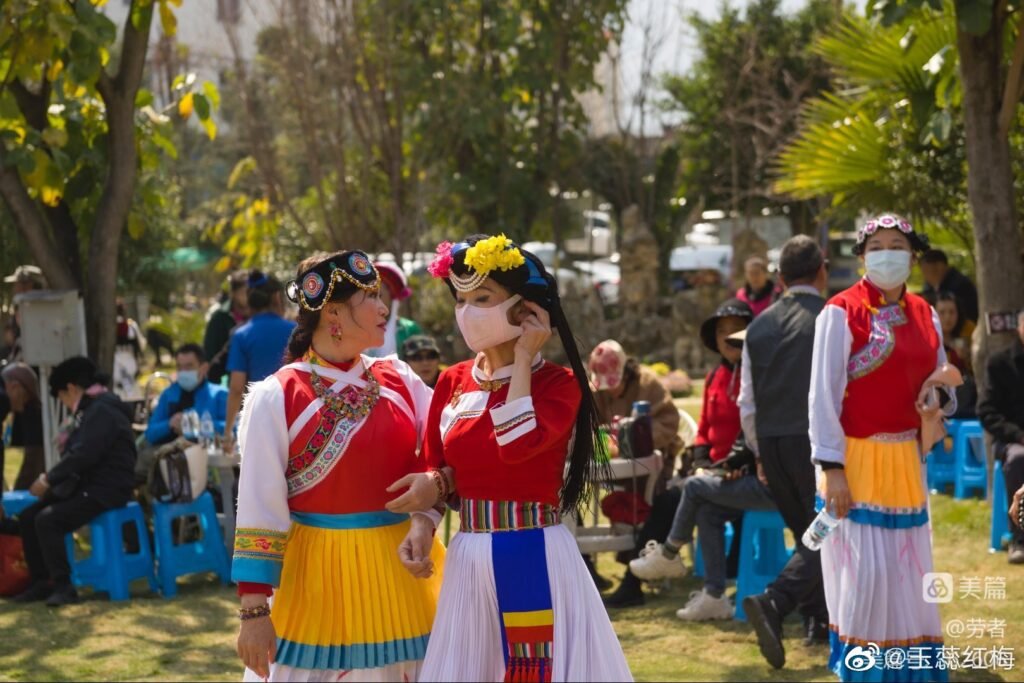
Governance and the Mu Family Dynasty
Historically, the Tibetan and Naxi peoples have shared a long-standing connection, tracing back to the era of the Tubo Empire. A significant event that symbolizes this deep relationship is the marriage between the Tibetan emperor, Tride Tsukden, and Princess Jiangza Tritsun from the Nanzhao Kingdom. This union not only signifies the diplomatic and familial bonds forged between the two powerful regions but also gave birth to Prince Jiangtsa Lhabon. This historical intertwining of the Tibetan and Nanzhao (ancestor of the Naxi people) lineages highlights the interconnectedness of these cultures and their shared history, further enriching the cultural tapestry of the region.
By the 16 Century, the Mu family was entrusted with hereditary governance over Lijiang, marking the beginning of over 500 years of Mu rule. The Mu family, descended from tribal leader Mailing who aligned with Kublai Khan during the conquest of the Dali kingdom, was granted the surname “Mu” by the Ming founder, Zhu Yuanzhang. The Mu family demonstrated loyalty to the central Chinese dynasties, evidenced by eleven imperial plaques within the Mu Mansion and significant financial contributions to the Ming Dynasty. This support helped establish Lijiang as one of the “Three Great Native Prefectures” of Yunnan, alongside Menghua and Yuanjiang.
The “Mu Family Genealogy,” compiled from the Ming Dynasty to the Qing Dynasty, is not just a family record but also reflects the political, economic, cultural, and legal history of the Lijiang region, preserved in text, pictorial, and stone inscriptions.
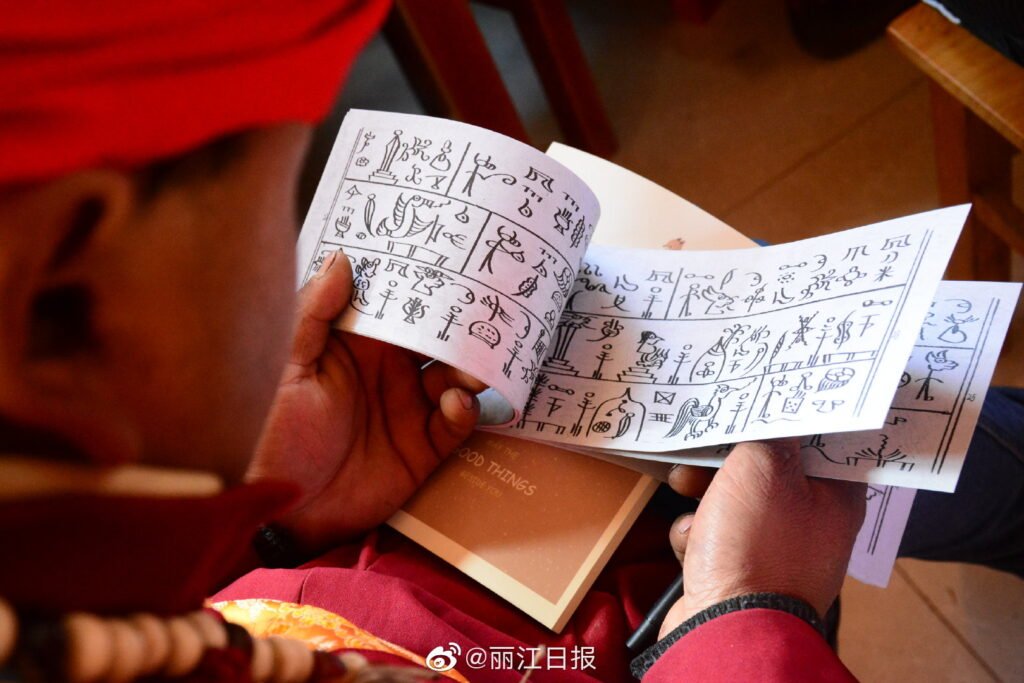
The Dongba Religion
Dongba, the main religion of the Naxi, derives its name from its priestly practitioners. Originating from primitive shamanism, Dongba is linked to the ancient Bön religion through its founder, Dongba shiluo, a transliteration of the Bön priest “Tonpa Shenrab.”
Dongba priests hold a significant social status within the Naxi community, acting as intermediaries between humans, deities, and spirits. These priests marry and have children, with their roles traditionally passed down from father to son or son-in-law. Dongba’s sacred texts, the “Dongba Scriptures,” are written on handmade “Dongba paper” with a bamboo pen, using a pictographic script known as “Dongba characters.” This script, a “living fossil” of writing, records Naxi myths, rituals, and cultural practices, providing invaluable insights into Naxi culture.
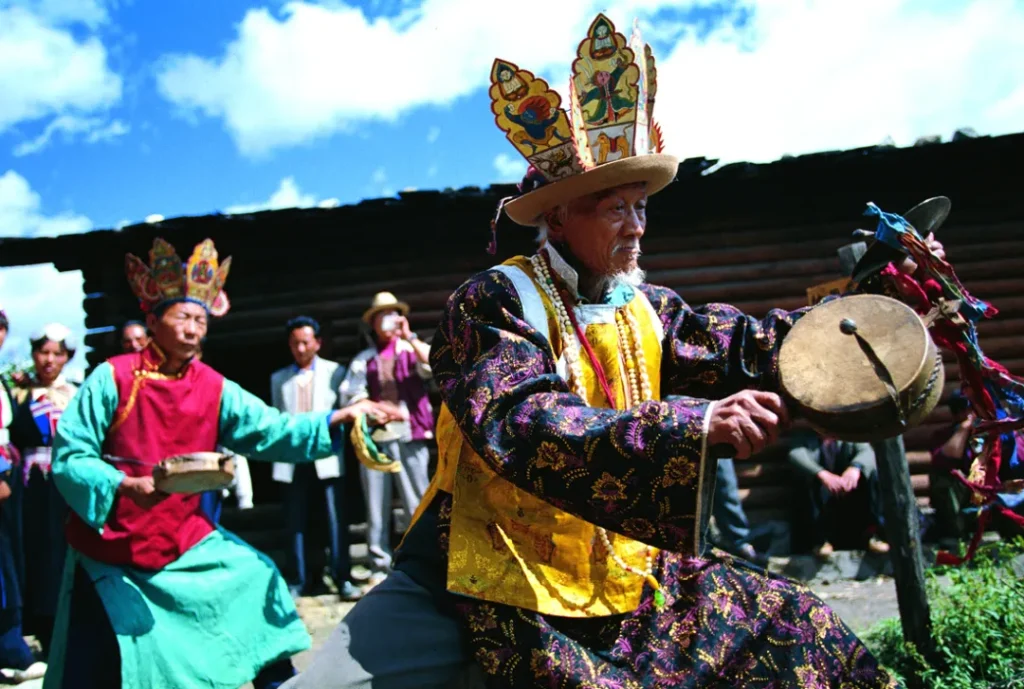
Rituals and Festivals
The Naxi engage in various religious rituals, with the “Heavenly Sacrifice,” held in spring and autumn, being the most significant. These ceremonies are conducted in specially designed open areas, emphasizing cleanliness and exclusivity of the ritual objects. In addition to archery and swing activities during these festivals, some villages also perform the “Yak Dance,” adding to the lively celebrations.
Before the formal recognition of their ethnicity, the Naxi were known by various names in different eras and by different neighboring ethnic groups. This rich historical and cultural heritage makes the Naxi an integral part of China’s ethnic mosaic, with their unique Dongba culture, language, and religion standing as testament to their enduring legacy.
Discover the Naxi Culture and Traditional Dress in Markam
The Naxi community, primarily residing in the Lower Yanjing region of Markam County, is a small but vibrant group of over a thousand individuals. Today, remnants of the Naxi culture, including the Naxi spoken language and traditional festivals like the “Napa” pig slaughter for ancestral worship, still persist. These people live in Tibetan-style earthen houses, savoring their butter tea and barley cakes, and speaking Tibetan with a Naxi accent. Their faith lies in Tibetan Buddhism, though the ancient Dongba culture of the Naxi has largely faded into history.
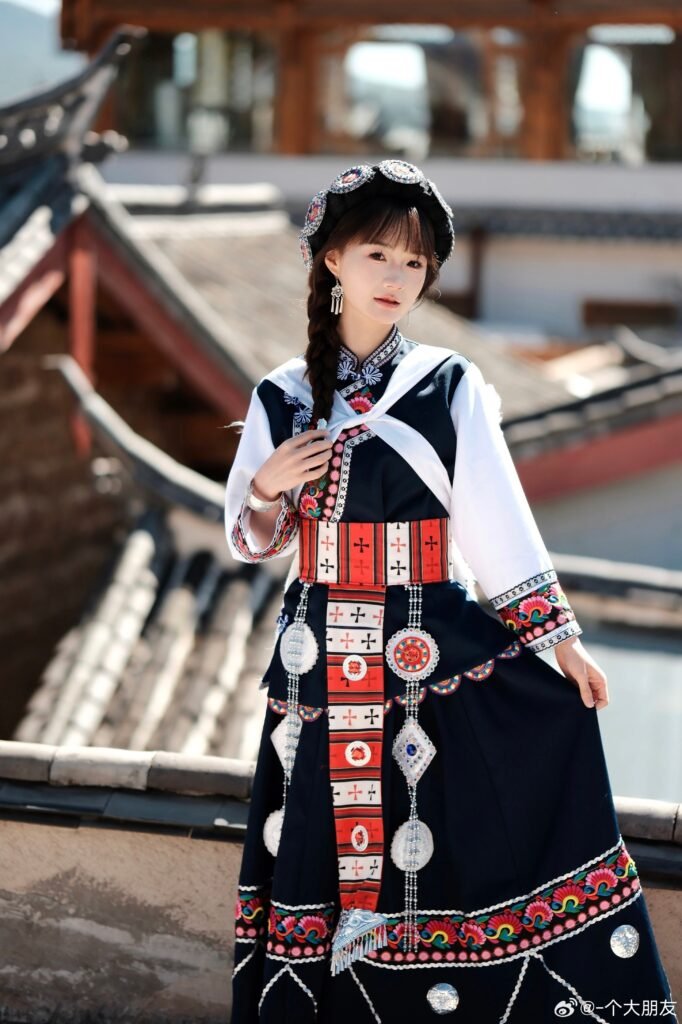
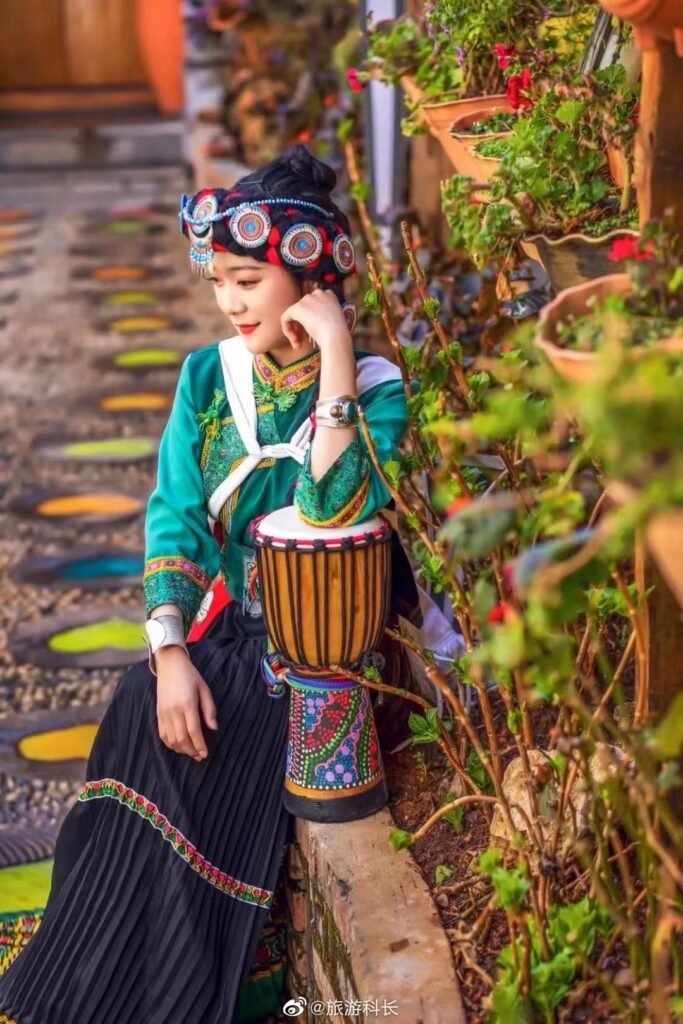
Traditional Naxi Attire: A Blend of Past and Present
Naxi men often wear Han Chinese-style clothing, with the elderly preferring collarless long shirts covered by blue overcoats. In contrast, Naxi women have largely preserved their traditional ethnic garments. Women from Lijiang wear long coats that extend past the knees, featuring wide waists and sleeves, layered with vests, and accessorized with pleated waistbands and long pants underneath, often draped in sheepskin shawls. These shawls are adorned with exquisitely embroidered “seven stars” (small circular fabrics) around the edges and sun and moon symbols (large circular fabrics) on the shoulders, symbolizing hard work and diligence.
Women from Ninglang wear short tops paired with floor-length pleated skirts, sheepskin capes, blue cloth headscarves, earrings, bracelets, and often cinch their waists with belts or sheepskin straps, creating a distinctive look.
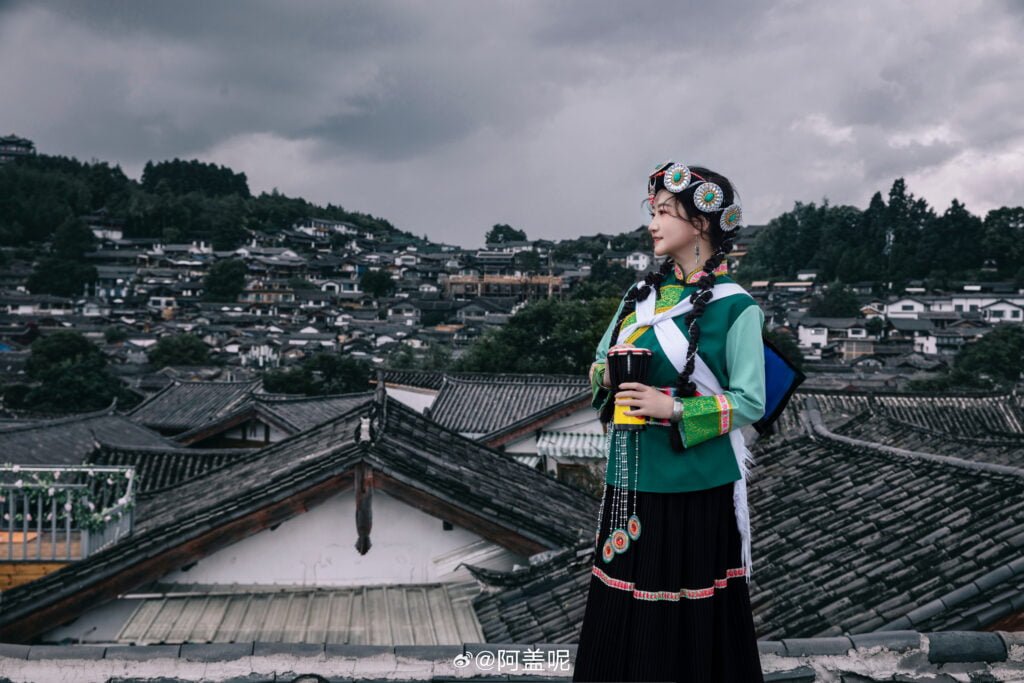
The Joyful Naxi Xie Dance
The Naxi Xie Dance, a cherished tradition among the Naxi people of the Yanjing area in Markam County, is performed during festivals and weddings. This circular dance involves both men and women, with no limit on the number of participants. Led by a “Xie Ben” (musical leader) playing the Bipa violin, the dance progresses from slow to fast, with songs dictating the length of each segment. Men and women take turns singing, dancing together in a clockwise movement.
Men don the “Soba” hat, “Dazhugame” shirts, “Ka Jian” jackets, and “Sangshi” Tibetan robes, accessorized with “Sijiru” necklaces, “Tuka” Buddha boxes, “Sangshi Dore” flint boxes at the waist, Tibetan knives at the back, and “Tiwu Kangba” shoes. Women wear “Guori,” “Tibujia,” and “Dabian” head ornaments, “Gamu” or “Nalong” earrings, “Gai Gong” necklaces, “Kawu” Buddha boxes, “Jiamang” at the waist, “Baku” bags on the left, “Kazhong” bags on the right, “Pumei” sleeveless robes, “Bangdian” aprons, “Sangdilamu” boots, and “Laziguri” bracelets. The dance features elegant steps, palm movements, and graceful, fluid motions.
Embracing Naxi Cultural Heritage
Despite modern influences, the Naxi people of Markam maintain a deep connection to their traditional customs, attire, and dances, reflecting a rich cultural heritage that continues to thrive. The Naxi attire and Xie Dance are not just cultural artifacts but living traditions that celebrate the Naxi people’s identity and history, offering a glimpse into the vibrant tapestry of ethnic diversity in Tibet.
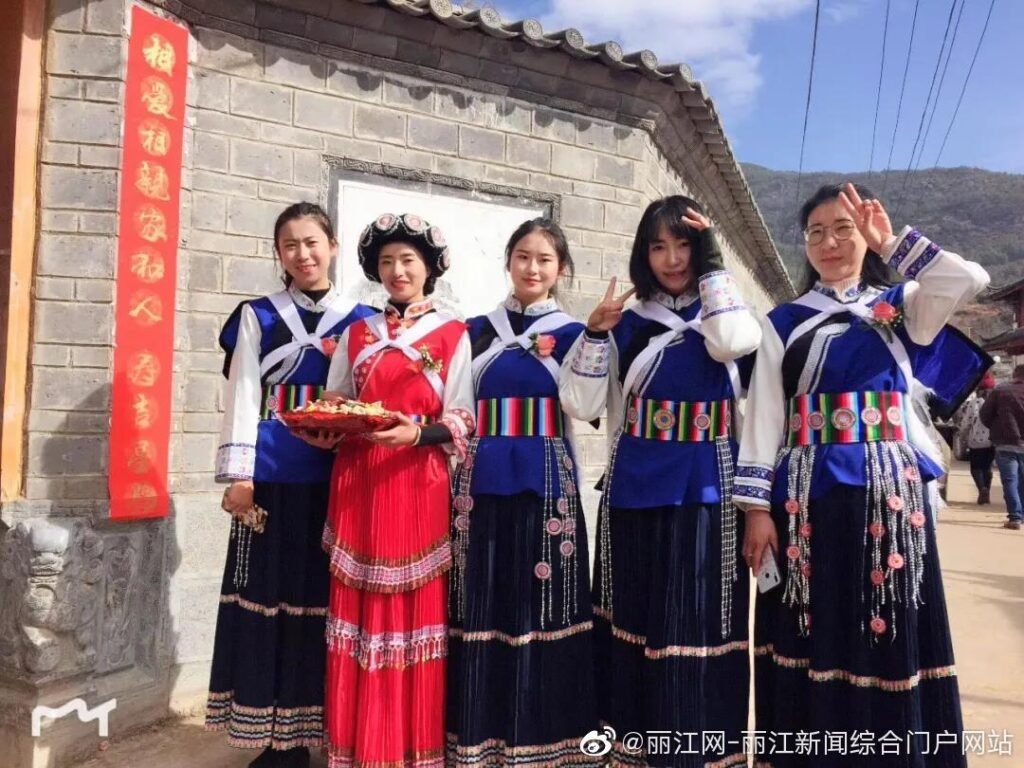
Naxi Language Dialects: A Rich Tapestry of Sounds
The Naxi people, with their rich cultural tapestry, speak in dialects that vary significantly across regions. The Western dialect is prevalent throughout the Naxi areas east of the Jinsha River, including Lijiang, Weixi, and Shangri-La, with the vernacular of Dayan Town in Lijiang County serving as the standard pronunciation. Conversely, the Eastern dialect is found in Naxi communities to the east of the Jinsha River, such as Ninglang, Muli, and Yanyuan, with the Mosuo language by Lugu Lake representing this dialect.
These dialectical differences, stemming from varied geographical landscapes and customs, pose challenges for inter-dialectal communication among the Naxi people.
Architectural Harmony: The Naxi Homestead
Naxi architecture, a fusion of Han, Bai, and Tibetan construction techniques, is distinguished by its brick and timber structures adorned with unique courtyards. Floors are intricately paved with stones, tile shards, and pebbles, arranged into symbolic patterns. These homesteads, surrounded by vibrant flowers, exude a deep sense of living culture.
The common architectural layout, “Three Houses and One Wall,” consists of three rows of houses and a reflective wall, forming a courtyard similar to the traditional Chinese quadrangle. The “Four Houses with Five Courtyards” design features four rows of houses, creating a large central courtyard and four smaller ones, embodying the spatial aesthetics of Naxi culture.
Cultural Festivities: The Sanduo Festival
The Sumduo Festival, also known as the “Three Duos Festival,” is a significant Naxi celebration honoring the deity Sanduo, a war god depicted as riding a white horse and wielding a white lance, symbolizing the protector of the Naxi people. This festival, with over a thousand years of history, originated in the Tang Dynasty with the establishment of temples dedicated to Sanduo.
Coinciding with specific dates in the lunar calendar, the festival features communal meals, singing contests, and is now recognized as a traditional Naxi holiday. Participants don elaborate costumes, converging at Beiyue Temple to offer sacrifices and prayers for prosperity and well-being. The celebration continues with outdoor feasts, singing, and dancing, alongside horse races and other competitive events, showcasing the vibrant community spirit.
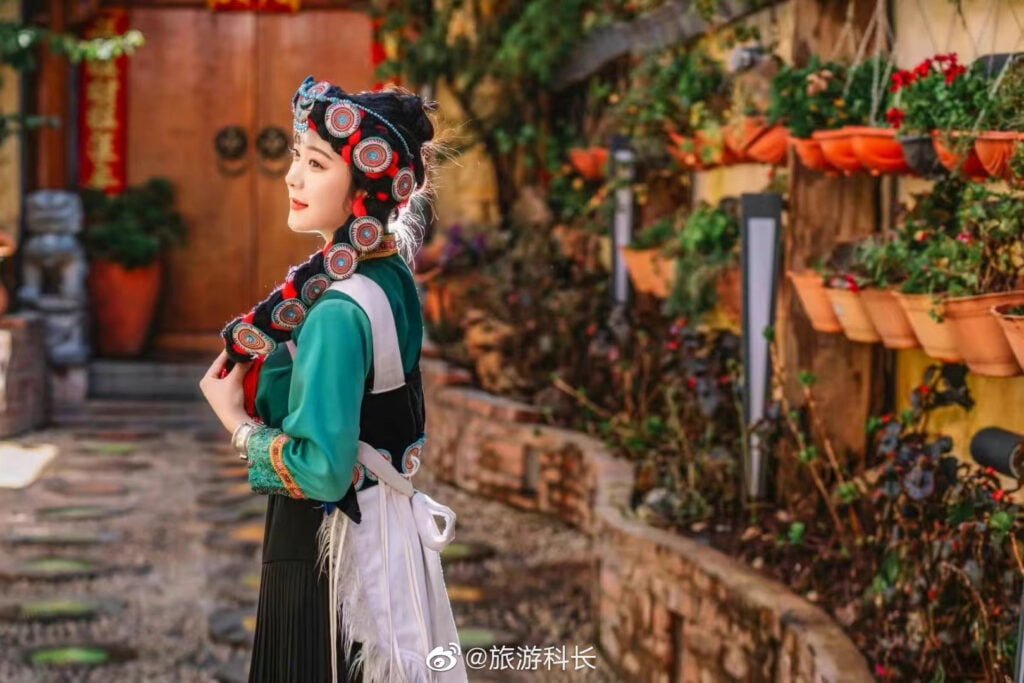
Yulong Naxi Autonomous County: A Blend of Nature and Culture
Yulong Naxi Autonomous County, under the jurisdiction of Lijiang City in Yunnan Province, stands as the sole Naxi autonomous county in China. Nestled between the Tibetan Plateau and Yunnan-Guizhou Plateau, this region is the cradle of the mystical Dongba culture.
Despite its southern location, Yulong Snow Mountain boasts perennial snow, creating a landscape of ethereal beauty. The Lashi Lake reflects the mountain’s southern foothills, providing a haven for migratory birds and echoing the harmony of nature.
Lijiang is renowned for its ancient towns, with Baisha Old Town retaining its original essence. As the birthplace of the Mu family’s reign, Baisha’s Naxi legacy is preserved in murals, traditional music, and exquisite embroidery. Walking through its ancient stone paths, visitors are transported to a time where the simplicity of Naxi life blends seamlessly with the blue sky and snow-capped mountains, encapsulating the enchanting allure of Lijiang.

















